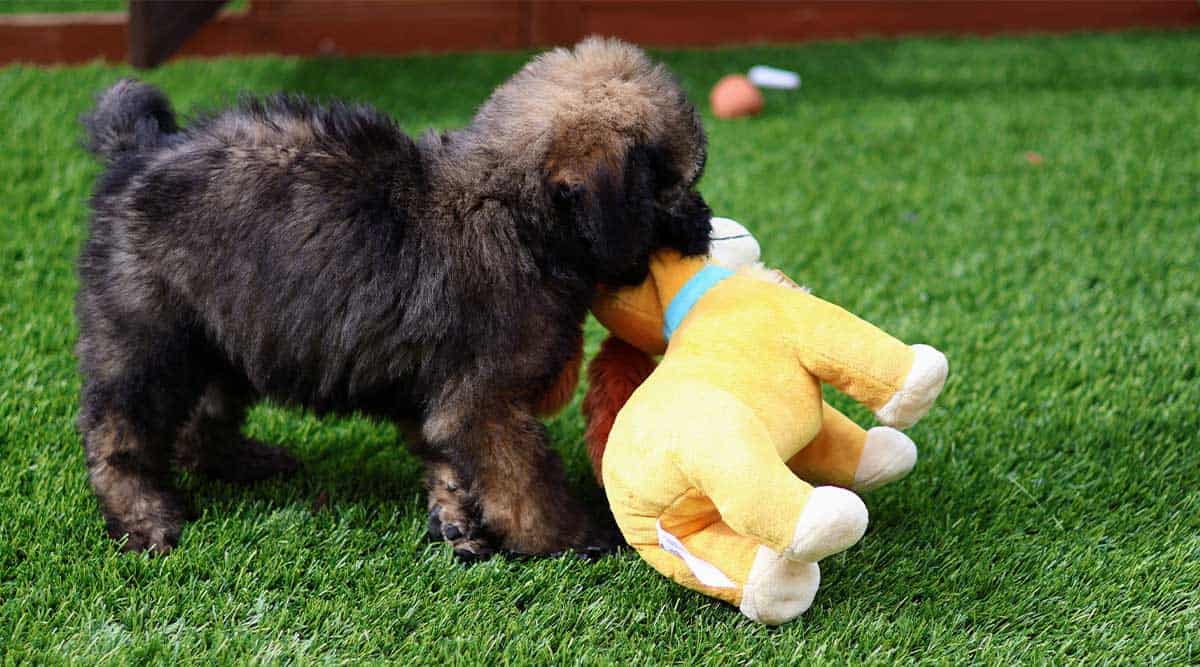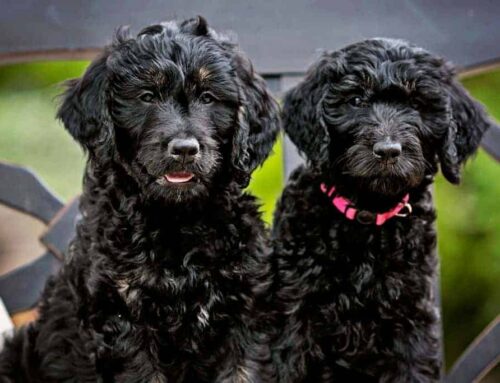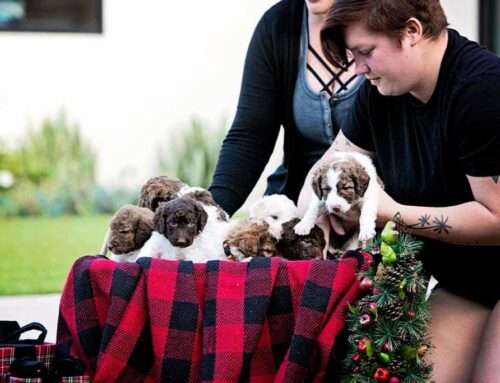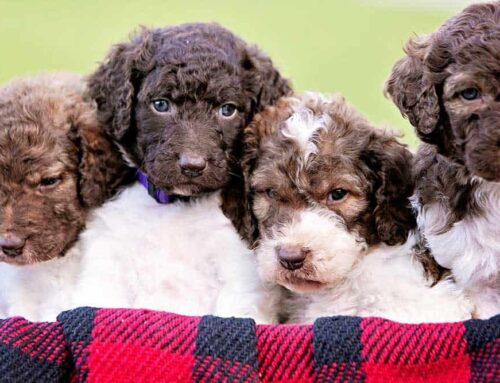Goldendoodles are becoming increasingly popular among pet owners, but that doesn’t mean they’re all alike. You might have noticed Goldendoodle with straight hair and others with curly hair, and if you’re wondering which one suits your lifestyle best, this post will help you make the choice easily. Here’s everything you need to know about Goldendoodles with straight hair!
Because there are differences between Golden Retrievers and Poodles it is both possible to produce curlier as well as straight-haired Goldendoodles by equalizing the percentage.
Things to Know About Goldendoodles with Straight Hair
Flat Coated Goldendoodles are the name given to full grown straight hair goldendoodles whose coats do not have the wavy or curly characteristics that are characteristic of the Goldendoodle breed. Despite having a build more similar to that of his Poodle forebears, the Goldendoodle with straight hair could and usually does resemble his retriever progenitor. This is because of the Goldendoodle’s flat coat. These dogs are just a mix of flat-coated retrievers and poodles; the retriever parent is responsible for passing on the gene that causes the flat coat. Consequently, why do some Goldendoodles have a surface that is coated in a flat layer? Let us explore that below.
Genetics
Golden Retrievers and standard Poodles are the parents of the Goldendoodle, which is a hybrid dog breed. The progeny of this rare hybrid can receive characteristics from both of its parents’ gene pools, regardless of the fact that neither two of the puppies that result from this crossbreeding will look exactly alike. Depending on the DNA that is passed down from the more influential parent, even puppies that are from the same generation can have very different outward appearances.
As a direct consequence of this, some F1 Mini Golden Doodles might inherit the curly coat of their Poodle mother, while others may develop the smooth, straight coat of their Golden Retriever father.
For the sake of this article, we will refer to the Retriever’s fur trait as the “N” gene. However, you may also occasionally hear it referred to as the “I” or “IC” gene expression, which means incorrect coat. However, the hair is not at all incorrect; this is the fur that a Golden Retriever ought to have.
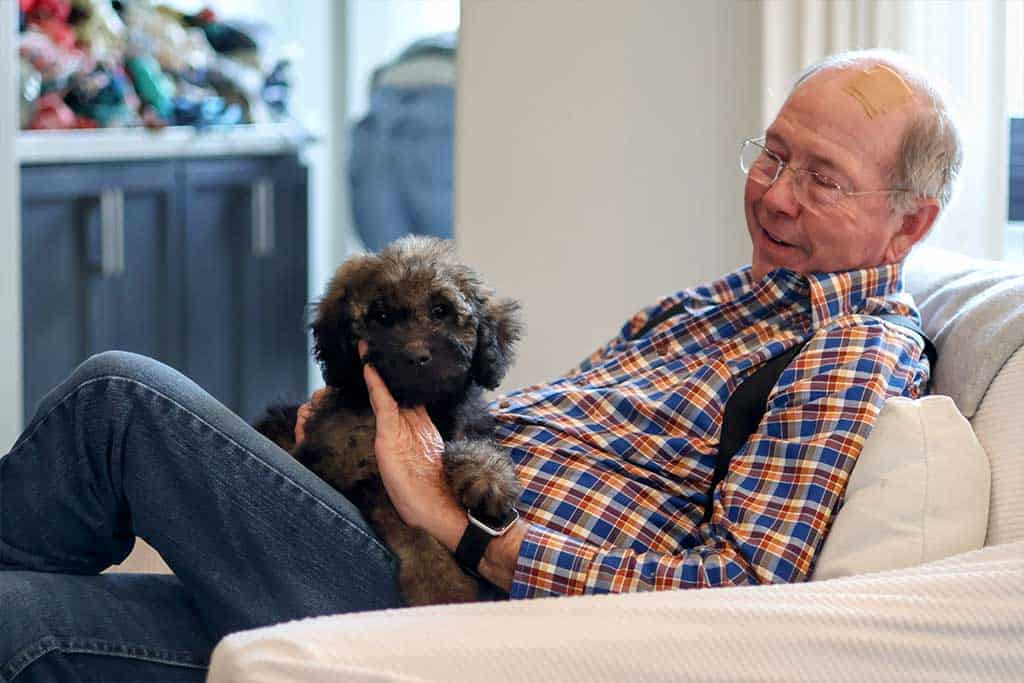
The Golden Retriever’s beautiful, beardless face and smooth, falling coat are both the result of the ‘N’ gene working its magic. The Poodle has a gene for their hair that is known as the “F” gene, which gets its name from the frizzies that their hair typically has. When a Golden Retriever is mated with a Doodle, resulting in F1 Goldendoodle progeny, each offspring will obtain one fur gene springing from each parent, transporting the gene, resulting in an inherited coat type of F/N.
This occurs only when a Golden Retriever has been bred with such a Doodle, ultimately resulting in F1 Goldendoodle progeny. This means that the canines will continue to have the furnishing that is characteristic of Doodles. When discussing F2 or 2nd generation Goldendoodles, which have been in existence for some time, the situation becomes more complex.
When it comes to the genetics of the coat, breeding a conventional Golden Doodle to another Golden Doodle is, in a sense, playing a game of chance.
It is expected that around half of the puppies born from a single litter will inherit the classic appearance of a Doodle by receiving one “F” gene and one “N” gene from each parent. The remaining kids will have a coat similar to that of a Poodle since they will have inherited two copies of the F gene, one from each parent. Others, accounting for approximately 25% of the population, will receive one “N” allele from every parent. They will end up with a thick coat similar to that of a retriever as a result of this.
Generations
The generation of the mixed breed could also have an effect on the type of fur that each and every progeny would have, which would result in some dogs being flat coated retriever poodle mix similar to that of the golden retriever.
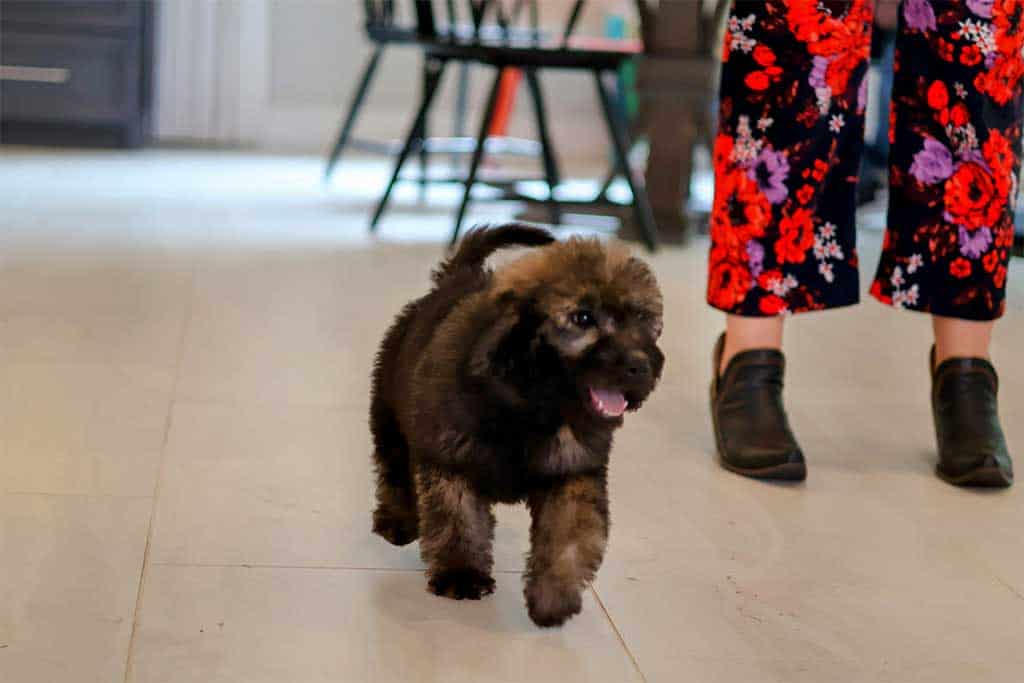
Puppies born to Poodles whose parents are both purebreds will have one legitimate Poodle parent and one genuine Retriever parent. This suggests that every parent must contribute one-half of all the genetic material that goes into the development of the pups. Because of this, an F1 Goldendoodle is made up of the same amount of poodle as it is of golden retriever.
However, an F1B Goldendoodle has just one parent who is a purebred Poodle and one parent who is a F1 Goldendoodle. The other parent is just an F1 Goldendoodle. As a direct consequence of this, the resulting progeny are often composed of 75% Poodle and 25% Golden Retriever. So, kids whose parents are F1B are much more likely to have a wavy coat than kids whose parents are F1.
Offspring of the F1B Goldendoodle are typically the most frequent variation because they have a cute and loving appearance that people adore, and they also have a coat that sheds very little. In general, this makes them the most popular type.
There is a shift in color.
The Goldendoodle puppy’s fur will regularly change in appearance as he grows older. As a dog reaches adulthood, the color of its coat may change, becoming lighter or even brighter, and the texture of its hair may become either smoother or puffier.
It is impossible to predict whether you will end up with a Goldendoodle with straight hair or a Goldendoodle that has frizzy hair similar to that of its poodle father or a smooth coat goldendoodle. This is one of the many appealing characteristics of Goldendoodles.
How to know if you have a Goldendoodle with straight hair when it is a pup.
When a Goldendoodle is still a puppy, it can be difficult to make an accurate prediction about the type of fur it will have when it is fully grown. Even without genetic testing, which can tell for sure which coat traits a puppy has, there are a few things that can be used to tell the difference.
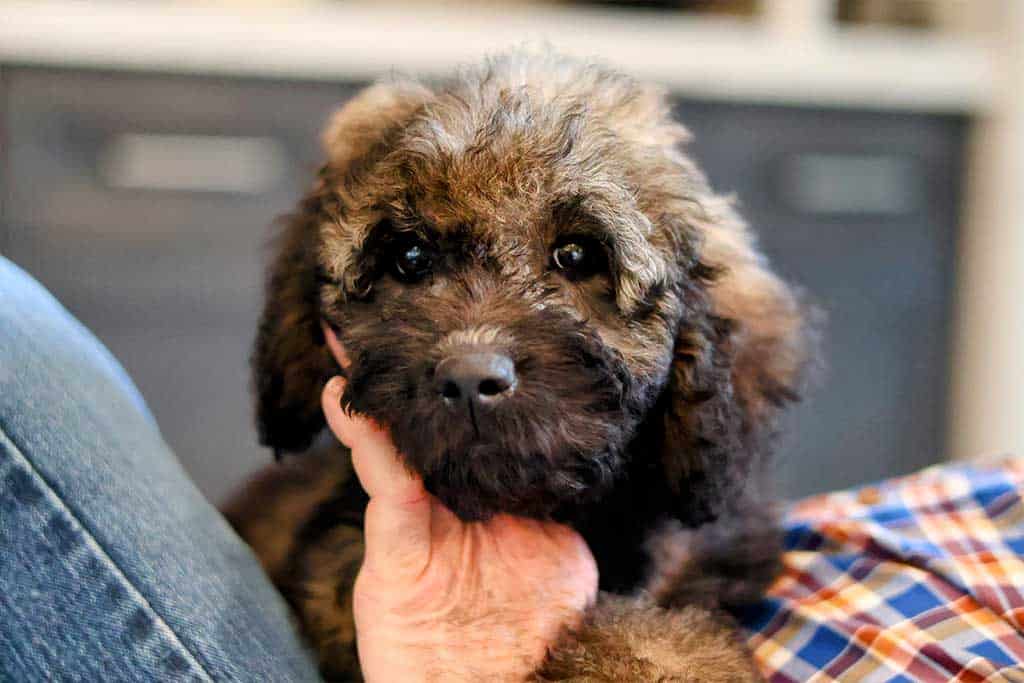
The hair on a puppy’s nose is frequently crimped or wavy, which indicates that the Goldendoodle puppy will develop curly hair as it gets older. If it does not have this characteristic, then it is possible that it is a miniature Goldendoodle with straight hair. However, in most cases, this trait won’t show up until the puppy is significantly older—at least 4 weeks old—than it otherwise would have been. Do not spend too much time inspecting the fur of that puppy, as the majority of all these progeny tend to have fluffy fur that frequently has waves in it.
The presence or absence of a moustache in the parent dog is the deciding factor in determining whether or not the progeny will have the characteristics typically seen in goldendoodles. It takes around twenty-four months to see the “whole look of the dog,” and even fully developed puppies have unusually smooth fur around their bodies in comparison to fully matured dogs. There are some full-grown, highly curly and densely furred goldendoodles, but there are other goldendoodle with straight hair despite having noticeable fur on their bodies.
Many retriever breeders perform medical examinations on the male dogs to determine whether or not they will produce dogs with straight, wavy, or natural curls in their puppies. Young dogs’ coat characteristics can be affected either by the Cu loci genome, which is also referred to as the KRT71 allele. The more refined a dog’s coat is, the lower the percentage of Cu locus it will have.
Because goldendoodles are frequently bred between golden retrievers and standard poodles over a significant number of generations, their hair may include a faulty Cu locus gene or be curly.
Both of these characteristics can be seen in goldendoodles. A DNA test can be carried out by your veterinarian to determine the type of coat that the puppy you are considering acquiring possesses. This is the most reliable way to figure out what your puppies’ coats look like.
You are going to want to go with just an F1b Goldendoodle if at all possible, or choose a company where geneticist will perform a lab test on your behalf so that you can be certain that your dog will have the specific coat pattern and color that you are searching for.
Curls are another worry since it is possible to witness an unfurred yet wavy puppy (with a smooth snout similar to the golden retriever’s but a curled fur on its body), or a thick doodle with smooth fur. Both of these outcomes are possible.
Is there a higher possibility of having an allergic reaction to a Goldendoodle that has a smooth coat?
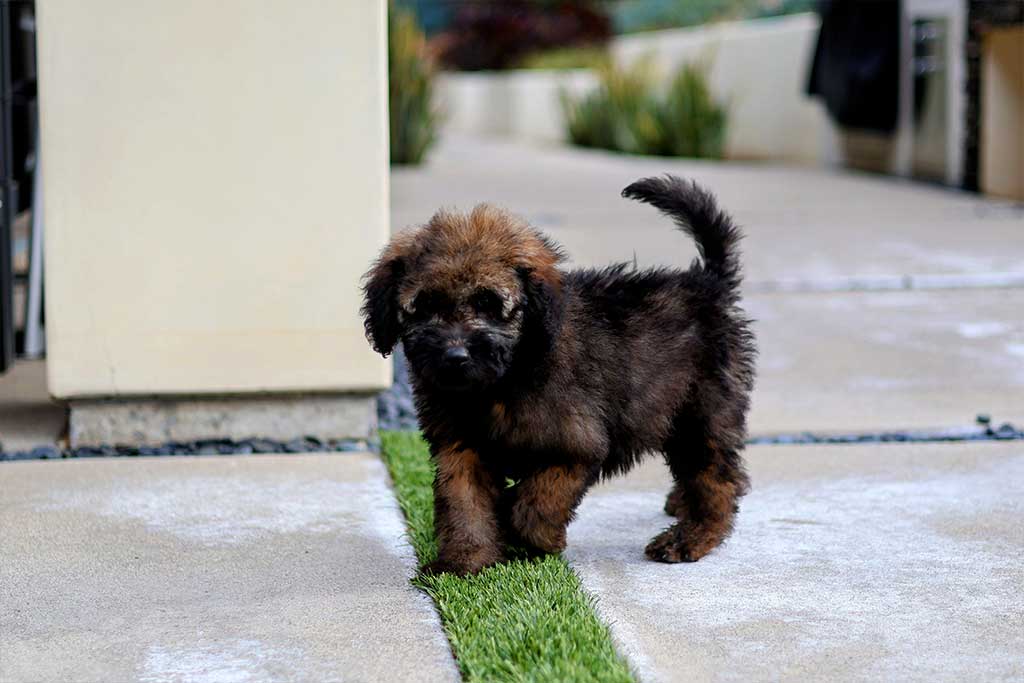
The fact that flat coat goldendoodle and poodle mix puppies don’t have allergens is one reason why they are so popular. It is more likely that a person will have an allergic reaction to doodles than to flat coat goldendoodle shedding.
The vast majority of sensitivities are brought on by “dander,” which refers to the tiny skin particles that are shed by each and every single mammal, or by spitting rather than by hair alone.
If you suffer from allergies and are interested in adopting a dog, the one and only way to determine whether a straight coat goldendoodle or straight haired mini goldendoodle or some other breed or mix of dog is suitable for you is to spend some quality time with the dog in question. If you have allergies or sensitivity, a good breeder will make you spend time with their other animals before you can buy a puppy from them.
Which generation of Goldendoodles has a coat that is straight?
In general (in reference to the generations of goldendoodles), the letter F stands for filial, which shows that perhaps the dog is just a mixture of two different dog species; the number # stands for the dog’s generation; and the letter B denotes a backward cross.
Goldendoodles of the first generation, also known as F1 Goldendoodles, are your best bet if you want a dog with a smooth coat. If this is your top priority, consider getting an F1 Goldendoodle.
In addition, there is a good chance of getting a Goldendoodle to have flat hair if indeed the dog is just an F2 Goldendoodle or possibly a Goldendoodle of the third or second generation.
This is because of the genetic makeup of these dogs. The Goldendoodle generations that have a retriever make up at least half of the litter and a poodle make up the other half have the best probability of generating a dog with straight hair.
Benefits of adopting Goldendoodles with straight hair
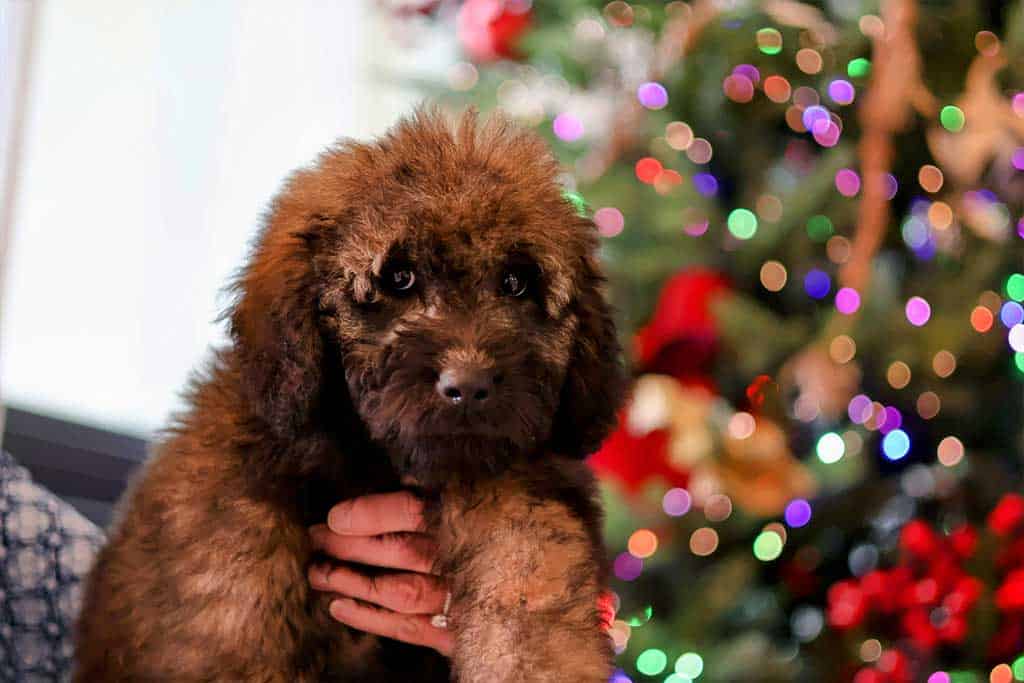
1. Less expensive than a goldendoodle with wavy or curly hair.
The vast majority of breeders are only interested in producing dogs with curled coats. Certain sorts of coats are among the most popular, and as a result, they are known for the allergic properties they possess. As a direct consequence of this, it is significantly more challenging for breeders to market puppies that have flat coats when they accidentally breed them.
Breeders generally place them on the market for significantly less than one thousand dollars due to the difficulty of selling them. It is common practice not to breed a breeding pair again if it has been established that their offspring always have a coat that is completely straight.
2. From all appearances, it is similar to a golden retriever.
The attitude of a Goldendoodle is only one of the many positive aspects associated with owning one of these dogs. Still, a goldendoodle with straight hair could be helpful because, in most cases, they are made the same way as golden retrievers.
Additionally, it depends on the person’s preferences. There are some people who do not regard Goldendoodles with curly or wavy coats as being as attractive as those that have flat coats. As a result, you are able to acquire a Goldendoodle with a coat that more closely matches your preferences.
3. No hair trimmings
The fact that flat-coated goldendoodles require significantly less time and effort spent on grooming translates to significant cost savings over the course of the dog’s lifetime. They nevertheless need regular grooming and bathing in order to stay clean and avoid excessive flaking. On the other hand, in contrast to wavy hair, Goldendoodle with straight hair do not need their hair to be cut anywhere between every six and eight weeks because it comes out naturally. This might save you anywhere from $400 to $550 annually, depending on the precise cost of the grooming services you receive. This helps to save the time and effort of getting your puppy to the groomer on such a regular basis, which is another benefit.
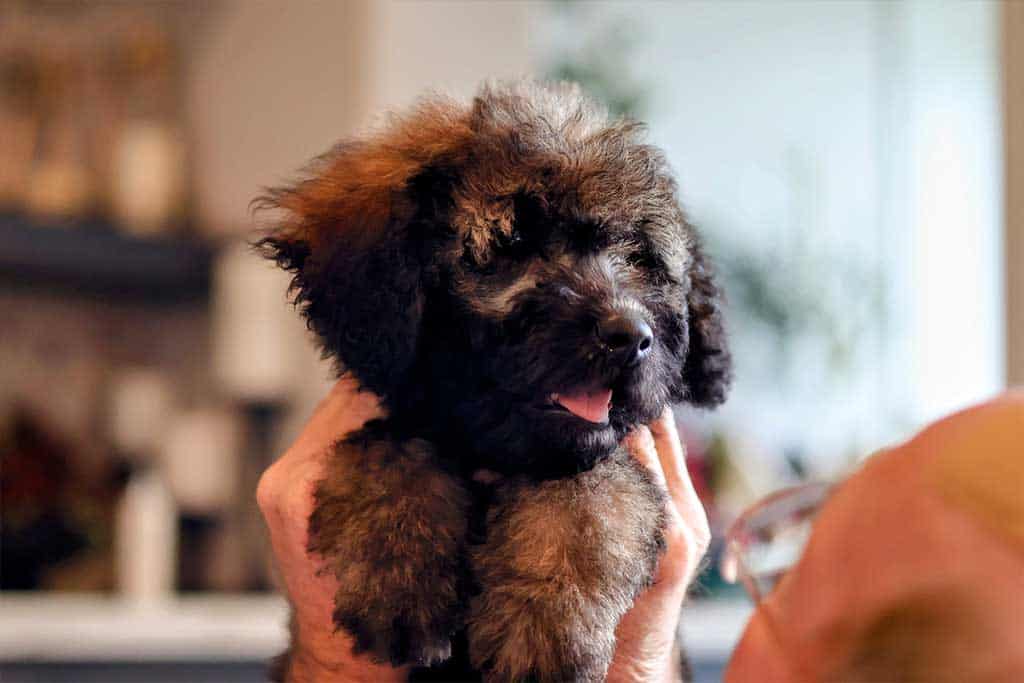
FAQ
1. Can a Goldendoodle have straight hair?
Most people don’t realize how common they are, but because of the way they look, they are often mistaken for golden retrievers.
2. Why Does My Goldendoodle Have Straight Hair?
When the fur gene from the golden retriever is more prominent than the fur gene from the poodle, which is why some poodles have a flatter coat than others.
3. Do Goldendoodles with straight hair shed?
Yes. Because they share a gene with retrievers, they have a flat coat and tend to shed. Go through our blog if you wonder why your Goldendoodle is shedding so much.
4. Which Goldendoodle Generation is the Best?
The F1 generation has the best looks and the best demeanor, making it among the most popular and most liked.
5. Do Goldendoodles Lose Their Puppy Coat?
All golden doodles, like all dogs, have a coat that changes as they age, and all golden doodles eventually develop a lifelong fur coat that may be curled, frizzy, or flat and plain.
Conclusion
There are plenty of options available when it comes to what type of coat your pup might have, so try to find one that is right for you. If you do not know where to start or what would be best suited for your home and family, then we suggest taking a look at our guide on everything you need to know about goldendoodles with straight hair.
